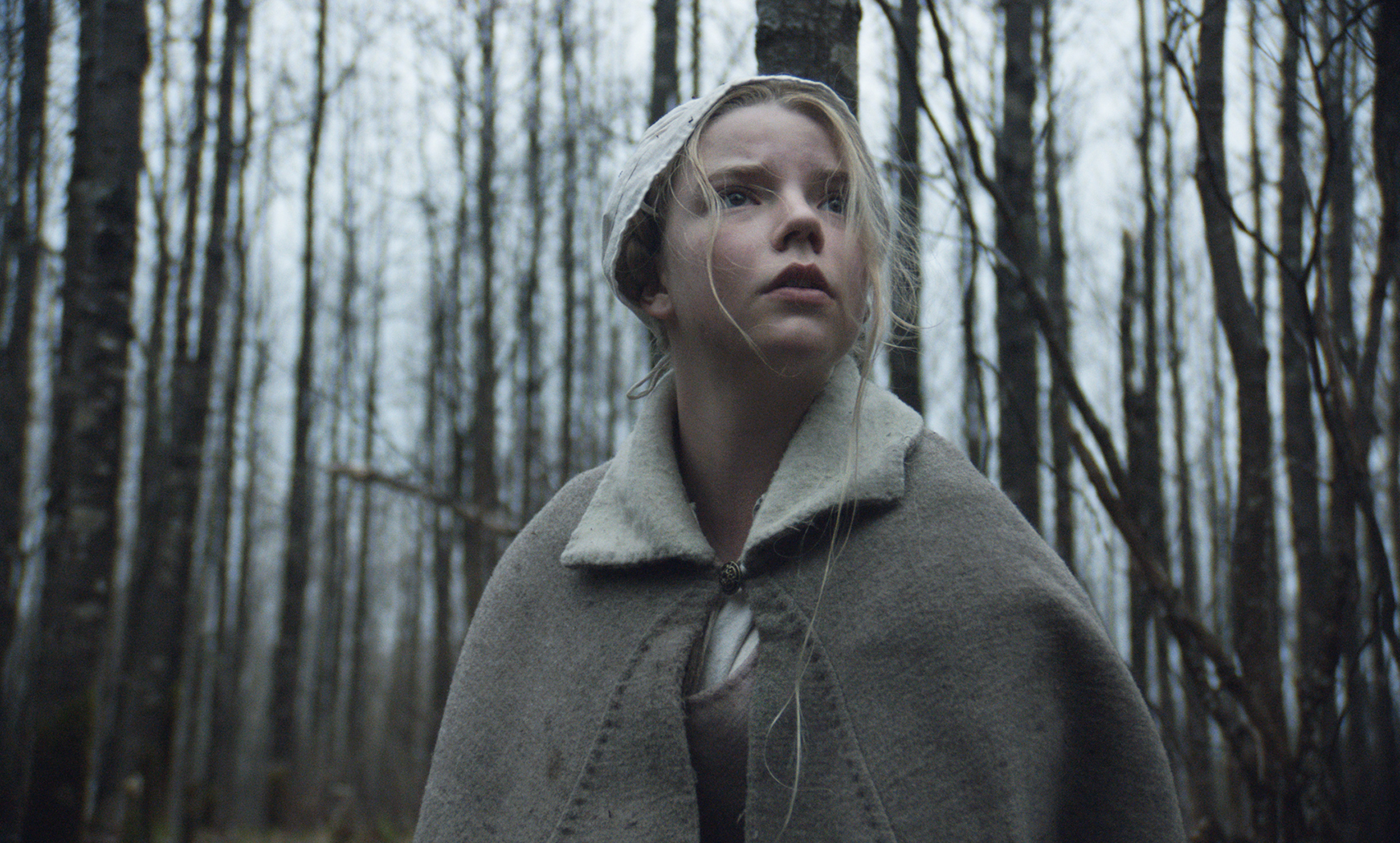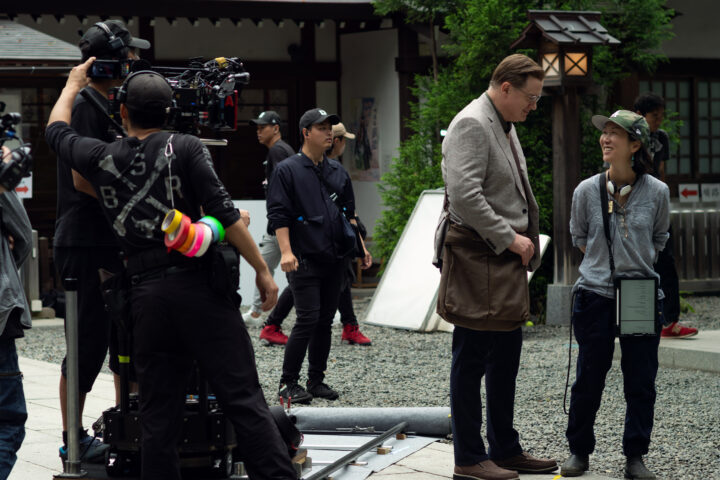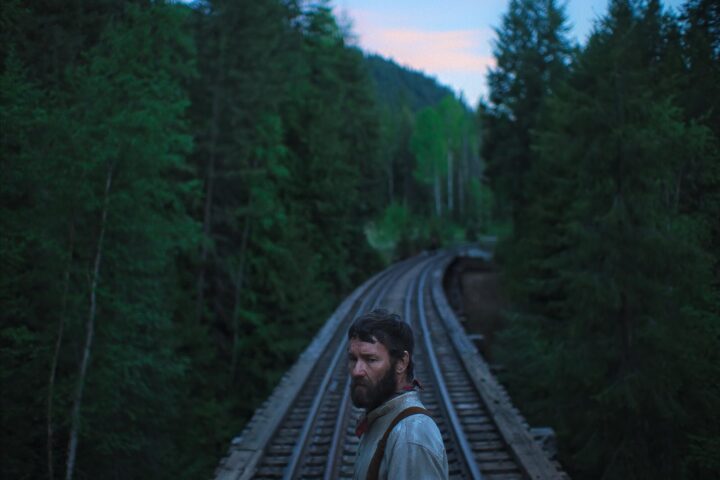An odd amalgam of Calvinist tradition and bedeviled horror, The Witch won the director’s prize for filmmaker Robert Eggers at the 2015 Sundance Film Festival for its atmospheric tale of outcast Puritans who settle on the edge of a haunted wood before hysteria and demons intervene. And while the mostly effective picture delivers superb control of technique and is commendable for its obvious strength of vision, its breaks no new ground as either an exploration of pre-Salem, misplaced denunciation or an examination of budding sensuality and its relationship to flowering evil.
Set in 1630 New England, the film’s opening finds a family exiled from their Plymouth-like colony after an apparent dispute over faith. Members include grizzled, devout patriarch William (Ralph Ineson), anxious mother Katherine (an androgynous Katie Dickie), smart, comely teenage daughter Thomasin (Anya Taylor-Joy), adolescent brother Caleb (Harvey Scrimshaw) and young siblings Jonas (Lucas Dawson) and Mercy (Ellie Grainger).
There is also an infant, and when the child is mysteriously spirited away for a forest crone’s grisly ritual, the dumbfounded family has no choice but to forge ahead. William remains stoic, which proves difficult for Katherine, who begins to sink into despair, homesick for mother England, exacerbated by a succession of disturbing events including the disappearance of a prized silver cup, a gun that backfires causing injury and the bizarre behavior of the family’s ebony-coated goat, producing blood in the milk bucket. And that doesn’t even cover the perhaps equally perverse dynamics between the children, Caleb harboring sexual stirrings for Thomasin, who in an unfortunate moment of levity jokes about her own capacity for the black arts.
But when Caleb is bewitched into a coma (leading to a superbly acted scene of possession articulated with real investment by young Scrimshaw), it isn’t long before Thomasin is thought the cause—she’s either brought the evil of the flesh or that of a literal demon down upon the fallen family—and Eggers raises the stakes with a succession of visceral shocks and plenty of flowing blood, courtesy of both its animals and the animals within.
The Witch is foremost an achievement in technique and tone, the tiny farm and its surrounding environs shot in rural Ontario by cinematographer Jarin Blaschke with largely natural lighting and a formal austerity, his compositions suggesting a pervasive tone of dread. The score, by Mark Korven, employs both electronic and vocal shocks that invade the would-be bucolic homestead. Special note should be made of the dialogue, comprised of colloquialisms and cadences from a world long passed, much of it unearthed during Eggars’ exhaustive documentation of the period and purportedly authentic, however demanding for today’s ear to sometimes decipher.
While I admired The Witch as a director’s exercise, despite Stephen King’s ringing endorsement, I was never truly disturbed. And that’s an issue for the picture, because the film takes its time, and then some, and because its fetishes—the 17th century customs, arcane diction patterns and subtle familial observances, all calibrated at a glacial pace—are all established fairly early in the film, and become somewhat of an audience endurance exercise during this decidedly slow burn, one in which none of the characters are three dimensional or all that interesting, good as Taylor-Joy is at conveying an innocent, lost.
Eggers has stated that The Witch was influenced by both Stanley Kubrick’s The Shining as well as Ingmar Bergman’s Cries and Whispers, and the feeling for an ancient evil surrounding a family in isolation, particularly the shifting roles and escalating emotions of its increasingly fraught women, make those precursors symbolically logical cousins.
The Witch has been compared to 2014’s The Babadook, a similarly auterist horror vision by filmmaker Jennifer Kent with deep thematic undercurrents of guilt and buried neurosis, and a much more frightening movie, one that deftly balanced its psychological and supernatural elements by grounding them in a compassionate, complex performance from Australian actress Essie Davis. It was a movie that inextricably linked its characters’ tortured psyches to its manifestation of evil, and one that smartly said there are some demons that can never be banished.
Like The Babadook, The Witch wants to have it both ways—psychological inquiry and full-blown Grand Guignol—and this time the halves are not a perfect fit because we don’t truly care about any of its characters. And despite the ballyhoo surrounding this picture as some sort of instant horror high watermark, hysteria and suspicion around witches is nothing new, whether the high-art of Arthur Miller’s The Crucible to many a drive-in, B-movie denouement, here cribbed from scores of other Satanism pictures complete with a standard-issue deflowering and the usual climactic ritual. Despite its many virtues and obvious integrity, in the final analysis The Witch is not all that enlightening—or frightening.
3 1/2 stars.



